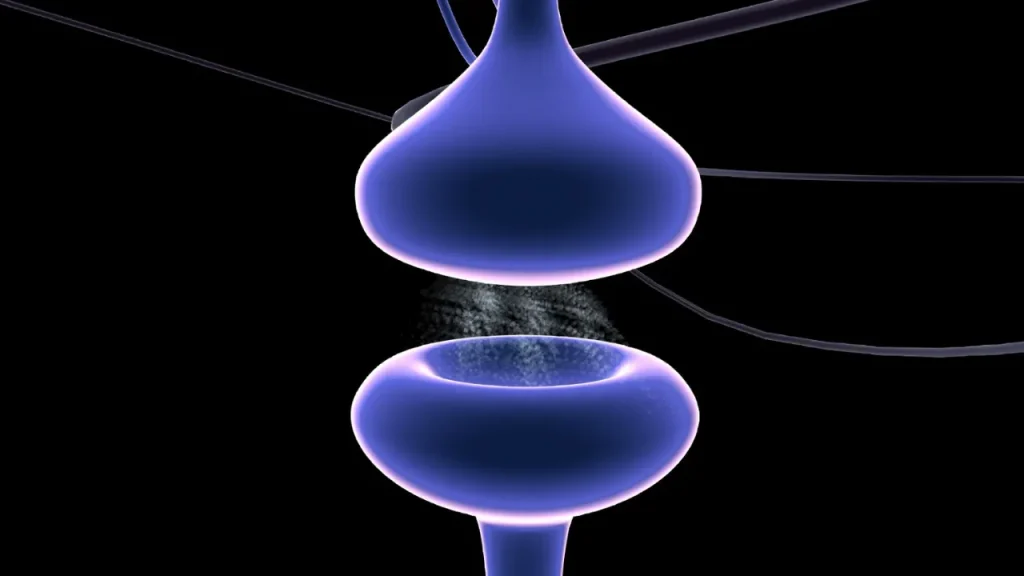Acorus calamus, sometimes referred to as sweet flag or calamus, is a plant that is indigenous to North America, Europe, and Asia. Due to its distinctive sweet, fragrant smell and lengthy history of usage in traditional medicine, it is attracting more and more attention in the world of nutritional supplements. Calamus will be thoroughly examined in this article, including its chemistry, health advantages, recommended dose, probable adverse effects, and drug interactions.
You May Also Like:
The Best Supplements for Brain Injury: 5 Top Brands Reviewed
The Best Mushroom Supplements for Memory: 5 Top Brands Reviewed
Calamus: Benefits, Dosage, Side Effects, Drug Interactions, and Other Important Information is an original (NootropicsPlanet) article.
The Nature of Calamus
Acorus calamus, sometimes referred to as sweet flag or calamus, is a perennial plant that is indigenous to North America, Europe, and Asia. This herbaceous plant is distinguished by its sword-shaped leaves and a spadix that emits a characteristic, fragrant perfume. It is often found near the shores of small lakes and streams.
Numerous civilizations have made substantial use of the herb in traditional medicine. Due to its rich content of bioactive chemicals, the plant’s rhizome, or rootstock, is the component that is most commonly employed for medicinal reasons. These contain bitter principles, several additional chemicals, and essential oils. The main components of essential oils include -asarone and -asarone.
Health Benefits of Calamus
Traditional medicine has used calamus to treat a number of conditions.
The plant’s bitter compounds encourage the formation of bile and digestive enzymes, which helps with digestion and alleviates dyspepsia.
Asarone has showed neuroprotective abilities, pointing to potential advantages for illnesses involving neurodegenerative processes.
Asarone may improve cognitive deficiencies in animal models of Alzheimer’s disease, perhaps through modifying cholinergic neurotransmission and lowering neuroinflammation.
Calamus has also been utilized for its analgesic, anti-inflammatory, and antibacterial effects. By preventing the cyclooxygenase enzymes from producing pro-inflammatory mediators, eugenol, a substance present in calamus, has been demonstrated to have anti-inflammatory and analgesic properties.

Chemistry of Calamus
Calamus is abundant in bioactive chemicals, bitter principles, and essential oils. The essential oil’s distinctive scent is due to its main ingredients, asarone and asarone. Eugenol, methyleugenol, and caryophyllene are among other substances that contribute to its distinctive aromatic character.
The physiological effects of the plant are assumed to be mediated by these bioactive substances. For instance, the psychoactive substance -asarone can pass the blood-brain barrier and affect the central nervous system. The gamma-aminobutyric acid (GABA) system, which is known to modify a number of neuropsychiatric diseases and plays a critical role in controlling neuronal excitability, is one of the neurotransmitter systems that it is known to affect.
Physiological Mechanism of Calamus Action
Calamus contains a variety of bioactive substances that are involved in its broad range of physiological actions. Most significantly, the psychoactive substance -asarone may affect the central nervous system by crossing the blood-brain barrier.
The gamma-aminobutyric acid (GABA) system, in particular, is considered to be modulated by asarone. GABA is an inhibitory neurotransmitter that lowers neuronal excitability and is essential for the regulation of mood, the stress response, and normal nervous system operation.
Calamus also contains other substances that have been shown to have analgesic and anti-inflammatory properties, including eugenol and caryophyllene. They lessen inflammation and related discomfort by inhibiting the activity of cyclooxygenase enzymes, which are involved in the generation of pro-inflammatory mediators.


Optimal Dosage of Calamus
Calamus, with its intricate chemical composition influenced by its geographical origin and the nuances of its extraction process, presents a fascinating conundrum when it comes to determining the perfect dosage.
This versatile plant, known for its rich history in traditional medicine, has often been recommended at a daily intake should average 100-200mg for every kilogram of bodyweight. However, the critical factor to consider here is that your specific needs and medical situation can be unique.
In the pursuit of finding the right dosage, it’s highly advisable for consumers to engage in a conversation with a healthcare professional. These experts can provide personalized guidance, taking into account an individual’s specific health condition, age, and any potential interactions with other medications or treatments. This approach not only ensures the safety and efficacy of Calamus consumption but also aligns with the overarching principle of responsible and informed health choices.
Side Effects of Calamus
Calamus has possible negative effects, while being typically safe for the majority of individuals when taken properly. Excessive consumption may produce any possible combination of side effects such as:
- nausea
- vomiting
- kidneys harm
- seizures
- stomach upset
It’s also crucial to remember that research on animals have shown the calamus component -asarone is carcinogenic. So it is advised to utilize calamus from areas with low -asarone concentration, such North American types.


Potential Substance Interactions with Calamus
Calamus contains a number of pharmacologically strong chemicals, therefore possible interactions with other medications should be taken into account. Calamus may increase the risk of bleeding by interfering with anticoagulant/antiplatelet medications. This is due to the ability of substances like the eugenol in calamus to prevent platelet aggregation.
Furthermore, calamus may interact with drugs used to treat seizures or anxiety, such benzodiazepines, because of its possible impact on the GABA system. When these drugs are used with calamus, their effects may be amplified and result in severe sedation or respiratory depression.
Best Uses of Calamus
Calamus has been used to treat a variety of medical ailments due to the vast range of bioactive chemicals it contains. The promotion of gastrointestinal health is one of the applications of calamus that has the most research behind it. The plant’s bitter constituents increase the formation of bile and digestive enzymes, which helps with digestion and relieves dyspepsia.
Calamus may also be helpful in treating neuropsychiatric problems because of its impact on the GABA system. Asarone may improve cognitive impairments in Alzheimer’s disease models by modifying cholinergic neurotransmission and lowering neuroinflammation, according to research.
Calamus’s anti-inflammatory and analgesic effects have also been used to treat pain. In diseases like arthritis that are marked by inflammation and related pain, its use may be useful.
The use of calamus should be supervised by a healthcare professional despite the fact that it provides certain health advantages. To guarantee the safe and efficient use of calamus, factors including the ideal dose, potential adverse effects, and potential interactions with other medications must be taken into account.
In conclusion, calamus is a multipurpose plant with a long history of therapeutic usage. Its myriad bioactive ingredients, although contributing to its range of health advantages, also call for cautious use. Calamus may be a beneficial addition to one’s health program with the right direction.
Calamus:
Conclusion
It’s clear that this acorus calamus holds immense promise in the realm of traditional medicine and nutritional supplements. While we’ve delved into its rich chemistry, health benefits, optimal dosage, potential side effects, and interactions with other substances, there’s a broader takeaway worth mentioning.
Beyond the knowing the science and practical applications, the essence of calamus lies in its potential to bridge the gap between ancient wisdom and modern well-being. It serves as a reminder that our journey towards better health doesn’t have to be overly complex or inaccessible. Calamus invites us to reconnect with nature’s offerings and embrace them responsibly, guided by expert advice and a mindful approach.
So, whether you’re considering calamus as part of your wellness routine or simply curious about its remarkable qualities, remember that knowledge, when paired with practicality and a touch of enthusiasm, can be a powerful catalyst for positive change


References:
- “An overview on traditional uses and pharmacological profile of Acorus calamus Linn. (Sweet flag) and other Acorus species.” Retrieved from: https://pubmed.ncbi.nlm.nih.gov/24200497/
- “Vacha: Uses, Health Benefits, Ayurvedic Indications, Dosage, Side Effects And Precautions.” Retrieved from: https://www.netmeds.com/health-library/post/vacha-uses-health-benefits-ayurvedic-indications-dosage-side-effects-and-precautions
- “Sweet Flag” Retrieved from: https://examine.com/supplements/sweet-flag/
Important Note: The information contained in this article is for general informational purposes only, and should not be construed as health or medical advice, nor is it intended to diagnose, prevent, treat, or cure any disease or health condition. Before embarking on any diet, fitness regimen, or program of nutritional supplementation, it is advisable to consult your healthcare professional in order to determine its safety and probable efficacy in terms of your individual state of health.
Regarding Nutritional Supplements Or Other Non-Prescription Health Products: If any nutritional supplements or other non-prescription health products are mentioned in the foregoing article, any claims or statements made about them have not been evaluated by the U.S. Food and Drug Administration, and such nutritional supplements or other health products are not intended to diagnose, treat, cure, or prevent any disease.
